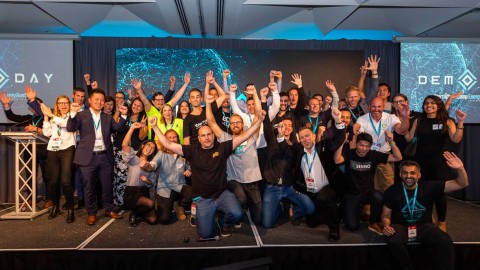National Energy Resources Australia (NERA), CSIRO’s Data61 and SixDe have supported WA-based robotics firm, Nexxis, to develop the world’s first, fully designed EX-rated robotic camera inspection device – Magneto-EX, which has been unveiled ahead of its 2022 commercial release.
The robot is the first system to be developed which is suitable for use in hazardous area inspections.
Nexxis’ Managing Director, Jason De Silveira, said Magneto-EX is a game changer not only for the oil and gas sector, but any industry where there is a need for hazardous, confined space inspections.
“Whether it’s operating at heights, deep underground or in the presence of toxic chemicals, industrial worksites are dangerous places. And confined spaces pose the biggest risk in terms of death or injury. Anything that can be done to keep humans out of these environments is a great step forward,” Mr De Silveira said.
“Until now, robotic inspections haven’t been possible in confined and hazardous spaces due to the risk of ignition. But Magneto-EX changes all that. With its design approved, EX-certification, our prototype can work safely and reliably in the most extreme conditions, alleviating the risk to human operators.”
Working in confined spaces is estimated to be 100 to 150 times more hazardous than operating on an open site. By nature, confined spaces are not designed for people to work in, with poor ventilation allowing for hazardous atmospheres to quickly develop.
“With its stable navigation and seamless movement, Magneto-EX can place its feet in small gaps and on narrow beams, adapting its body configuration to navigate complex geometry and through narrow apertures,” Mr De Silveira, said.
“We’re confident Magneto-EX will not only save lives but will also dramatically reduce downtime costs at an industry wide level.”

Magneto-EX, IMAGE: NERA
Magneto-EX was developed with the financial assistance and industry support of NERA, Data61 and SixDe.
NERA’s CEO, Miranda Taylor, said it has been exciting to help Nexxis on this journey.
“NERA’s support of Nexxis dates back to 2018 when they were a team of just eight and it’s been wonderful to have been able to provide that early support to them as they have grown. We’re so excited about the Magneto-EX project, which we think can both help cut costs but more importantly save lives,” Ms Taylor said.
“The next step is for Nexxis to partner with some early adopters in industry and trial and refine the device, all leading to a commercially available version sometime next year.”
Western Australia’s Minister for Innovation and ICT, the Hon Don Punch MLA, congratulated Nexxis on the launch of Magneto-EX and said the State Government is a proud supporter of the Western Australian-based robotics firm.
“Nexxis’ Magneto-EX is a prime example of how the Western Australia’s robotics sector is thriving and competing globally,” Mr Punch said.
“Innovation has an important role to play in growing and diversifying the State’s economy, and the Western Australian Government is committed to nurturing local innovators.”
Western Australian Chief Scientist, Professor Peter Klinken, said, “Nexxis is a prime example of how innovative and technological expertise can be found right here in Western Australia.
“It’s fantastic to have a world leading robotics company based in WA and I look forward to seeing Magneto-EX make a real difference to safety levels in the resources sector and beyond.”
Created by Nexxis, the spider-like device, featuring magnetic feet, is seeking partners for viability testing to drive its commercial release.
According to the McKinsey Global Institute report, Beyond the supercycle: How technology is reshaping resources, it is estimated that between $900 billion to $1.6 trillion in savings throughout the global economy can be unlocked through technology-driven changes by 2035.
Ms Taylor said, “Nexxis is helping to position Australia as a world-leader in automated robotic inspection research and manufacturing. They’re already exporting robotic parts to help with the clean-up at the Fukushima nuclear plant. Magneto-EX is a major step forward in safer inspections in the industry.”














